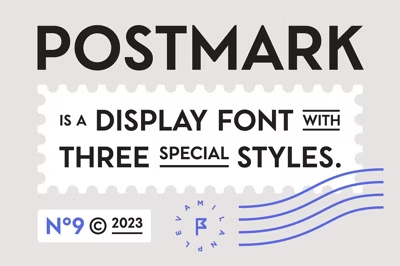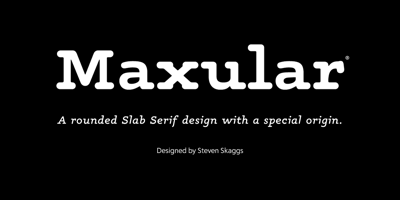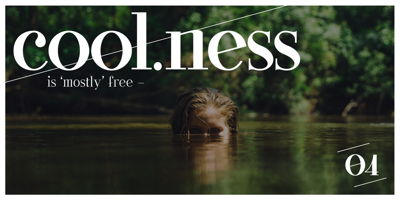Anti-Design Fonts: The Rebellious Typography Trend Loved by US Millennials
Anti-Design Fonts: The Rebellious Typography Trend Loved by US Millennials
In the polished world of American design, where every pixel is perfect and every curve is calculated, a rebellion is brewing. Anti-design fonts are exploding across the creative landscape, embracing everything traditional typography rules tell us to avoid: irregular spacing, clashing weights, deliberately ugly proportions, and gloriously chaotic compositions. For US millennials, these "ugly" fonts represent something beautiful: authenticity in an oversaturated world of algorithmic perfection.
This isn't just a trend – it's a movement. From Brooklyn creative agencies to Portland indie bands, American millennials are weaponizing typography's chaos to cut through the noise of Instagram-perfect aesthetics. Anti-design fonts have become the visual equivalent of punk rock: loud, unapologetic, and defiantly human in their imperfection.
Breaking Every Rule in the Typography Book
Anti-design fonts deliberately violate fundamental typography principles that have guided designers for centuries. They feature inconsistent letter spacing that makes traditional designers cringe, mix multiple weights within single words, and combine conflicting stylistic elements that shouldn't work together – but somehow do.
These fonts embrace visual discord as a feature, not a bug. Letters might sit at different baselines, character widths vary wildly within the same word, and traditional kerning rules are thrown out the window. The result is typography that feels raw, urgent, and impossible to ignore.
What makes anti-design fonts particularly powerful is their rejection of the "good design" establishment. While corporate America has spent decades perfecting clean, readable, inoffensive typography, anti-design fonts scream their imperfections proudly. They're the visual equivalent of saying "we don't care about your rules."
The aesthetic draws inspiration from grunge zines, protest posters, basement show flyers, and DIY culture – all touchstones of millennial cultural identity. These fonts channel the spirit of making something with whatever tools you have, perfectionism be damned.
Why US Millennials Are Obsessed
American millennials came of age during the rise of social media perfection, endless Instagram filters, and algorithmically optimized content. By their late twenties and thirties, many are experiencing severe aesthetic fatigue. Anti-design fonts offer visual relief from the relentless pursuit of perfection that defines so much contemporary digital culture.
This generation grew up with limited economic opportunities, witnessed multiple financial crises, and entered adulthood during a global pandemic. Traditional markers of success – homeownership, stable careers, traditional life milestones – feel increasingly out of reach. Anti-design fonts reflect this generational disillusionment with conventional paths and expectations.
Millennials also value authenticity above almost everything else. They can spot corporate pandering from miles away and have little patience for brands trying too hard to appear relatable. Anti-design fonts signal genuine rebellion rather than calculated edginess, making them perfect for brands wanting to connect with this skeptical demographic.
The DIY ethos embedded in anti-design typography resonates with millennials who grew up creating their own entertainment, building online communities, and launching businesses from their bedrooms. These fonts celebrate making something imperfect rather than waiting for permission to create something perfect.
There's also a nostalgic element: anti-design fonts evoke the raw energy of early internet culture, when websites were built by enthusiasts rather than algorithms. For millennials who remember the creative chaos of early MySpace pages and GeoCities sites, anti-design fonts feel like coming home.
The Psychology of Ugly Design
The appeal of anti-design fonts reveals fascinating insights about human psychology and aesthetic preferences. Research in cognitive psychology suggests that people are naturally drawn to moderate complexity and slight imperfection – qualities that anti-design fonts deliver in abundance.
Perfect typography can feel cold and institutional, while anti-design fonts feel human and approachable. The deliberate flaws create emotional connection by suggesting that real people, with real limitations and real creativity, made these choices.
Anti-design fonts also benefit from the "pratfall effect" – the psychological phenomenon where people become more likable after making minor mistakes. Typography that's slightly "wrong" can feel more relatable and trustworthy than typography that's technically perfect.
For millennials specifically, anti-design fonts provide visual rebellion against the aesthetic conformity they see everywhere. Using ugly fonts becomes an act of resistance against the homogenized visual culture of corporate social media platforms.
The time investment required to make anti-design work also signals authenticity. Anyone can use a perfect Google Font, but crafting effective anti-design requires skill, creativity, and genuine artistic vision. Millennials recognize and respect this effort.
Real-World Applications Across Industries
Despite their rebellious nature, anti-design fonts are finding surprising success across various American industries. Independent music venues, craft breweries, and alternative fashion brands were early adopters, using anti-design typography to signal their outsider status and creative credibility.
The food and beverage industry has embraced anti-design fonts for artisanal products and locally-sourced offerings. These fonts help brands communicate authenticity and small-batch quality in crowded markets dominated by corporate competitors with perfect branding.
Creative agencies serving millennial-owned businesses increasingly incorporate anti-design elements to help clients stand out from competitors using traditional corporate typography. The deliberate imperfection becomes a competitive advantage in markets where everyone else looks the same.
Even some tech startups are experimenting with anti-design fonts, particularly those targeting creative professionals or countercultural communities. These companies recognize that appearing too polished can actually hurt credibility with certain audience segments.
Publishing and media companies use anti-design fonts for alternative content, underground music coverage, and youth-oriented publications. The typography choices signal editorial independence and cultural relevance to millennial readers.
The Craft Behind the Chaos
Creating effective anti-design fonts requires more skill than traditional typography, not less. Designers must carefully orchestrate chaos, ensuring that deliberate ugliness doesn't become accidental illegibility. The best anti-design fonts maintain readability while maximizing visual impact.
Successful anti-design typography often follows hidden structural rules that create coherence within apparent randomness. Designers might vary letter heights while maintaining consistent color, or randomize spacing while preserving reading rhythm. The goal is controlled chaos rather than actual anarchy.
Color choices become crucial in anti-design applications. High contrast combinations, clashing palettes, and unexpected color relationships help reinforce the rebellious aesthetic while ensuring sufficient legibility for practical use.
The key to effective anti-design is intentionality. Random ugliness reads as amateur, while purposeful imperfection reads as artistic. Millennial audiences, having grown up with extensive visual literacy, can easily distinguish between deliberate design choices and simple mistakes.
Digital vs. Print Applications
Anti-design fonts perform differently across media, with each platform offering unique opportunities and challenges. Social media platforms like Instagram and TikTok provide perfect contexts for anti-design typography, where scroll-stopping visual impact matters more than sustained readability.
Print applications allow for more extreme anti-design experimentation, as designers don't need to worry about screen resolution or browser compatibility issues. Concert posters, zine layouts, and protest materials can push anti-design aesthetics to their absolute limits.
Web design requires more careful consideration of accessibility and user experience when implementing anti-design fonts. Designers must balance rebellious aesthetics with practical usability, often limiting anti-design elements to headlines and accent text while using readable fonts for body copy.
Mobile applications present particular challenges for anti-design typography, as small screens amplify readability issues. However, creative designers are finding ways to incorporate anti-design elements through strategic application in icons, headers, and short text elements.
The Business Case for Rebellion
While anti-design fonts might seem risky for businesses, they offer significant competitive advantages when used strategically. In oversaturated markets, ugly fonts help brands achieve the most valuable commodity in modern marketing: attention.
Anti-design typography creates memorable brand experiences that stick in consumers' minds long after exposure. While beautiful design blends together, ugly design stands alone – a crucial advantage in attention-deficit digital environments.
The fonts also enable smaller businesses to compete with larger competitors on creativity rather than budget. Anti-design requires vision and skill rather than expensive resources, leveling the playing field for millennial entrepreneurs working with limited budgets.
Brand differentiation becomes easier when competitors are afraid to embrace imperfection. Companies willing to look deliberately ugly can own entire aesthetic territories that risk-averse competitors won't enter.
Implementation Strategies and Best Practices
Successfully implementing anti-design fonts requires strategic thinking rather than random application. The key is using ugliness purposefully to support brand messaging and audience connection rather than shock value alone.
Start with small experiments: use anti-design fonts for social media graphics, event announcements, or seasonal campaigns before applying them to core brand materials. This approach allows teams to gauge audience response while minimizing risk.
Context matters enormously in anti-design applications. Fonts that work perfectly for underground music events might be entirely inappropriate for healthcare communications. Consider your audience's expectations and your brand's personality before embracing typography rebellion.
Accessibility remains important even in anti-design contexts. Ensure sufficient color contrast, provide alternative text for important information, and maintain basic readability standards even while breaking aesthetic conventions.
The Future of Typography Rebellion
As anti-design fonts gain mainstream attention, the challenge becomes maintaining their rebellious edge. True anti-design must evolve to stay ahead of commercial appropriation and maintain its authentic countercultural appeal.
Expect to see more sophisticated anti-design tools that help designers create controlled chaos more efficiently. Variable fonts with "ugliness" axes might allow real-time adjustment of imperfection levels for different contexts.
The trend will likely fragment into subgenres, with different styles of ugliness emerging for different communities and purposes. Millennial anti-design might evolve differently from Gen Z interpretations, creating rich typography ecosystems.
Anti-design fonts represent more than aesthetic choice – they're a statement about values, authenticity, and creative independence. For US millennials seeking visual alternatives to algorithmic perfection, ugly fonts offer beautiful rebellion. In a world of endless polish, sometimes the most radical choice is embracing imperfection.





